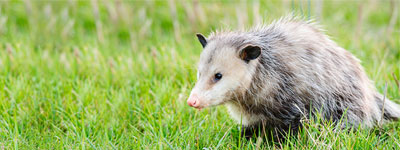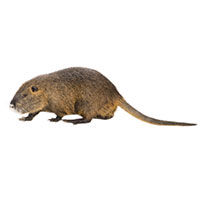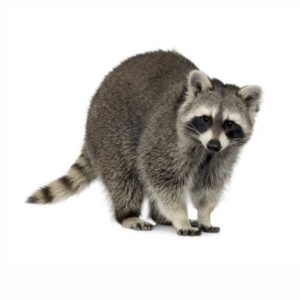Opossum Diet
The diet of the opossum is very adaptable to the environment they find themselves in, making them opportunistic eaters. If it smells good and is easily accessible, they will eat it. Opossums eat anything from insects, fruit, plants, slugs, snails, rats, mice, frogs, crayfish, and carrion, as well as pet food or food, left unsecured in garbage cans.
Opossum Habitat
Opossums are not picky when it comes to their habitat, found anywhere from open woods, brushy shrublands, farmlands, parks, suburbs, and even in urban areas. They may occupy abandoned dens of other species, or live in hollow logs, tree holes, under porches, or in crawl spaces. No matter where they are, there will always be a reliable water supply nearby.

Opossum Life Cycle
Opossums are solitary animals except during their breeding season, which occurs between February and August. A female reaches sexual maturity by one year of age. After its first year, the female opossum is capable of having up to two litters of 8-14 young. After 12 to 13 days of gestation, the tiny newborns crawl up into their mother’s fur-lined pouch where they will be nurtured by her mammary secretions. The young remain in the pouch for eight or nine weeks while they grow at a fast rate. By 14 weeks of age, the young opossums are weaned and are left to fend for themselves.
Opossum Damage & Disease
Although an opossum has a relatively fearsome face and bears some resemblance to rats with their long tails, they are not generally dangerous. They also rarely carry rabies, which is a common concern, especially for pet owners. They can bite and defend themselves, but they are not considered much of a threat.
Disease
There are only a few diseases that are associated with opossums. They tend to have lower incidents of rabies than other wildlife pests, but they might carry: Leptospirosis, Tuberculosis, Relapsing fever, Tularemia, Spotted fever, Toxoplasmosis. Several of these actually come from the parasites that opossums carry with them, and can become serious.
Home Damage
Opossums are very opportunistic. If there is already a hole in the roof, they might use it to get into attics, but they will rarely dig or chew those holes themselves.
Lawn Damage
They might dig in your lawn looking for grubs and other insects that lurk just below the surface level.
Opossum Prevention & Control
Opossum Prevention
Like many pests, the best way to get rid of them is to make changes to your home and property so that opossums do not find your home attractive. This means doing things like:
- Removing vegetation and debris from your property to remove hiding places.
- Securing lids on garbage cans and containers.
- Bringing pet food inside.
- Making sure that holes and entry points around your home are secured.
- Trimming the trees around your home. Opossums are excellent climbers and will use trees to get onto your roof.
- Sealing up areas beneath your deck or porch to eliminate places for them to hide.
Opossum Control
Much of wildlife control is knowing and understanding the habitat and behavior of the animal. Opossums are transient animals, and typically move on after a couple of days. If necessary, live trapping can be done with canned cat food or apples.
If you’re having problems with opossums around your home or business, contact a pest control professional for expert removal services.
Need help with Opossums?
We'll call you! Leave your information below.
Pests Belong Outside!
Leave your information below and we will give you a call back.
"*" indicates required fields
*During normal business hours. After hours inquiries will be returned the next business day.





